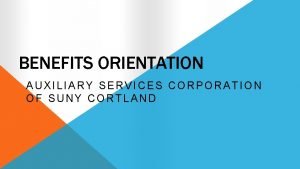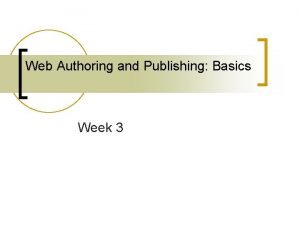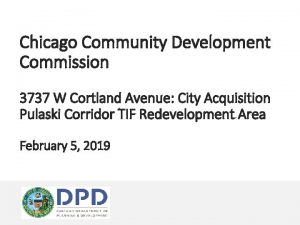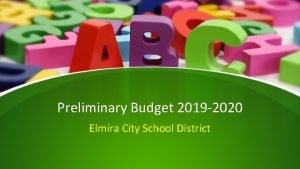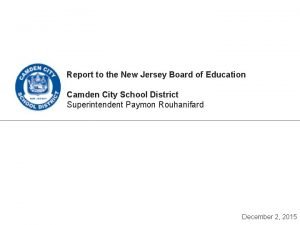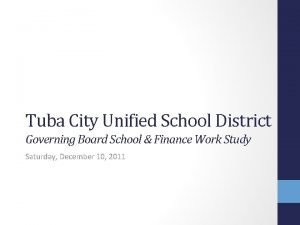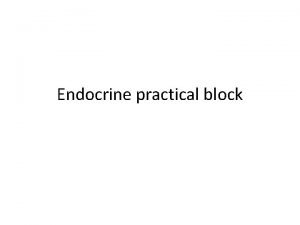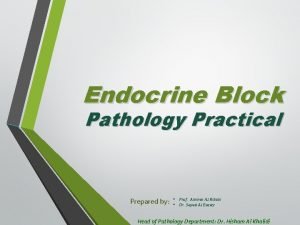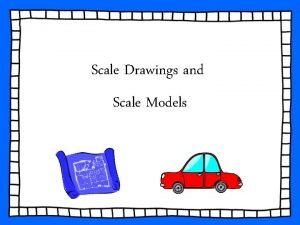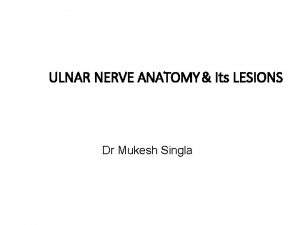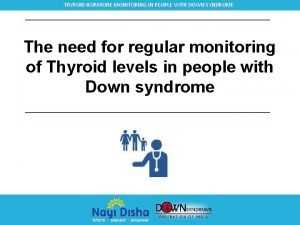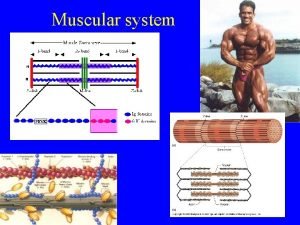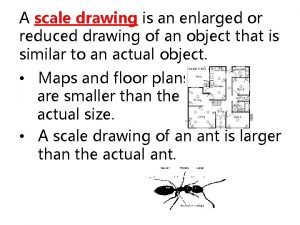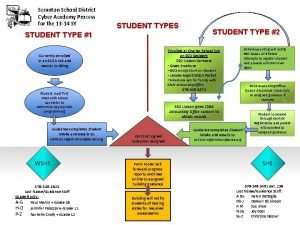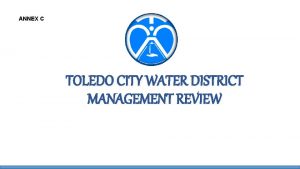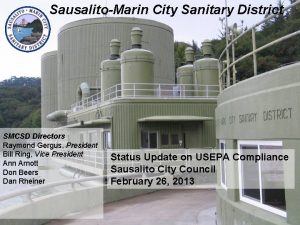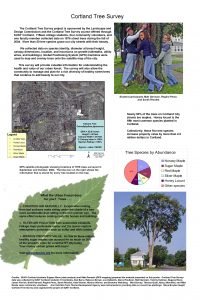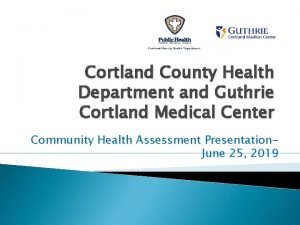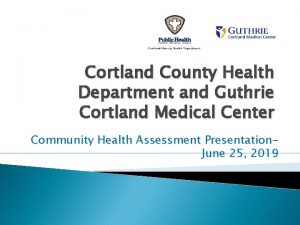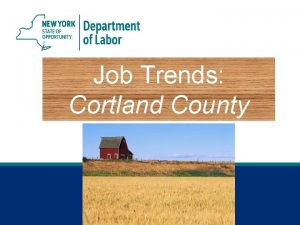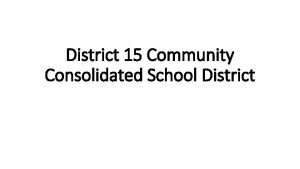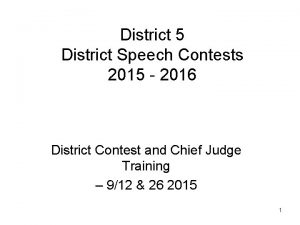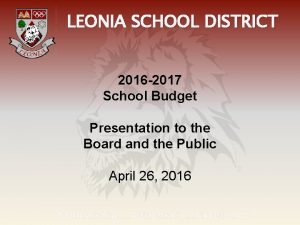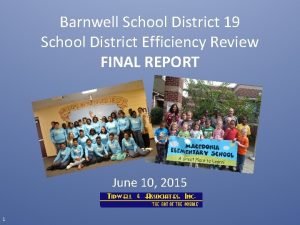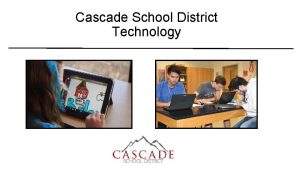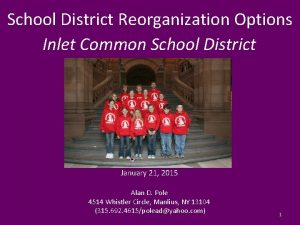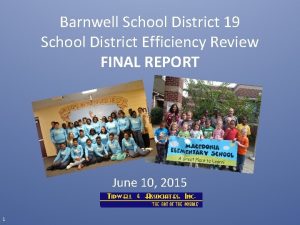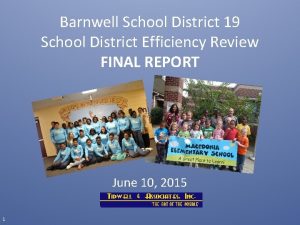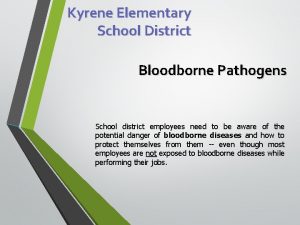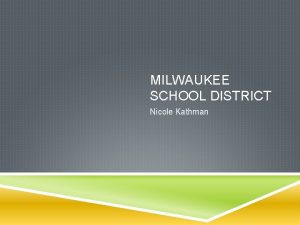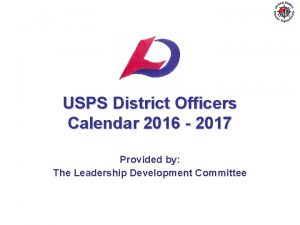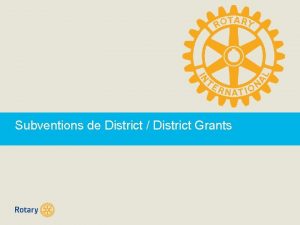2016 2017 Cortland Enlarged City School District 2016



























- Slides: 27


2016 -2017 Cortland Enlarged City School District

2016 -2017 Our Continuous Improvement Journey

2016 -2017 High Levels of Learning for All Students

Our Challenge • Our 3 -8 achievement is not what we want it to be • Our graduation rate is not what we want it to be • There are gaps between the achievement of different groups of learners in our district • Levels of student engagement are not what we want them to be • Our students are not as healthy as we want them to be • Our community has high expectations

High Levels of Learning for All Students The “Why”

Public Education Schools are here to prepare children to be adults. As educators, it is our job to ensure our students learn the essential academic skills, knowledge, and behaviors needed to succeed in their adult life.

The Need “In 2012, about one-third of jobs in America were in occupations that typically require postsecondary education for entry. ” U. S. Bureau of Labor and Statistics. (2013). Education and training outlook for occupations, 2012 -2022.

The Need “By 2020, 65 percent of ALL jobs in the economy will require postsecondary education and training beyond high school. ” Carnevale, Smith & Strohl. (2013). Recovery: Job growth and education requirements through 2020

The Need Family in poverty Fails to escape the poverty cycle Child grows up in poverty The Poverty Cycle Struggles to get a job Is significantly disadvantaged in education and skills

The Need In Cortland: • Our 3 -8 achievement is not what we want it to be • Our graduation rate is not what we want it to be • There are gaps between the achievement of different groups of learners in our district • Levels of student engagement are not what we want them to be

Our Goal To create a systematic process that ensures every child receives additional time and support needed to learn at high levels.

The Mission To ensure high levels of learning for all students. High levels means: • High school plus • Grade-level or better

Fundamental Assumptions • • • Not all students learn in the same way. Not all students learn at the same speed. Some students lack prior knowledge and skills. Some students lack proper behaviors. Some students have a home life that is counterproductive to academic success.

Our Dilemma Our traditional school system was not designed to ensure that all students learn at high levels. • Professional isolation • Failure was acceptable • Few students went to college • Schools and teachers sorted students

Our Dilemma “The main function of school is to prepare for the duties of life that a small proportion of all the children in the country – a proportion small in number, but very important to the welfare of the nation – who show themselves able to profit by an education prolonged to the eighteenth year, and whose parents are able to support them while them remain so long at school. ” -National Education Association. (1894). Report of the Committee of Ten on Secondary School Studies.

Our Dilemma “The deep structure of tracking remains uncannily robust. Most middle and high schools still sort students into classes at different levels based on judgements of students’ ‘ability’. ” -Oakes. (2005). How Schools Structure Inequality

Our Dilemma “This sorting continues to disadvantage those in lower track classes. Such students have less access to high-status knowledge, fewer opportunities to engage in stimulating learning activities, and classroom relationships less likely to foster engagement with teachers, peers, and learning. ” -Oakes. (2005). How Schools Structure Inequality

Our Dilemma As educators, we have a tremendous tendency, often subconscious, to perpetuate that system in which we were successful. How different, honestly, is your current school from the schools you attended? How much has the world change in that same amount of time?

We Know What Works We expect the average student to academically improve 0. 40 (effect size) by staying alive and attending school for one year. -Hattie. (2008). Visible Learning: A Synthesis of Over 800 Meta-Analyses Relating to Achievement.

The “Home Effect” • • Just living and going to school Socioeconomic status: Home environment: Parental involvement: . 40. 57. 51 -Hattie. (2008). Visible Learning: A Synthesis of Over 800 Meta-Analyses Relating to Achievement.

Under Our Control Students in schools where teachers and administrators who named factors inside their control as having the most significant contribution on student success had three times higher achievement than those that named outside factors. In Our Control Outside factors

More Powerful than Poverty There at least 30 things we can do that have a more powerful impact on learning than poverty. -Hattie. (2008). Visible Learning: A Synthesis of Over 800 Meta-Analyses Relating to Achievement.

More Powerful than Poverty • • Just living and going to school Socioeconomic status: Collective teacher efficacy Student monitoring of learning Response to intervention Feedback Formative assessment Discussion . 40. 57 1. 44 1. 07 1. 13. 90. 82

More Powerful than Poverty • • Just living and going to school Socioeconomic status: Collective teacher efficacy Student monitoring of learning Response to intervention Feedback Formative assessment Discussion . 40. 57 1. 44 1. 07 1. 13. 90. 82

The Future Why do our schools need to change? It’s not because of federal and state mandates. It’s not because our district has a label.

The Future Why do our schools need to change? It’s not because of federal and state mandates. It’s not because our district has a label. It’s because we want our students to be ready for their future.
 Cortland enlarged city school district
Cortland enlarged city school district Suny oswego auxiliary services
Suny oswego auxiliary services Studentweb cortland
Studentweb cortland 1842 west cortland street
1842 west cortland street Oswego degreeworks
Oswego degreeworks Sacramento city unified school district v. rachel h
Sacramento city unified school district v. rachel h Elmira city school taxes
Elmira city school taxes Camden city school district
Camden city school district Redwood city school district board meeting
Redwood city school district board meeting Elmira city school district bus garage
Elmira city school district bus garage Tuba city unified school district
Tuba city unified school district Enlarged drawings show components larger than their
Enlarged drawings show components larger than their Hashimoto thyroiditis
Hashimoto thyroiditis Enlarged thyroid gland
Enlarged thyroid gland Nodular goiter
Nodular goiter Enlarged cardiac silhouette
Enlarged cardiac silhouette Enlarged hyperchromatic pleomorphic nuclei
Enlarged hyperchromatic pleomorphic nuclei What is a proportional two dimensional drawing of an object
What is a proportional two dimensional drawing of an object Thumb up test
Thumb up test Pictures of swollen thyroid gland in neck
Pictures of swollen thyroid gland in neck Enlarged muscular mixing/churning chamber
Enlarged muscular mixing/churning chamber A is an enlarged or reduced drawing of an object
A is an enlarged or reduced drawing of an object Summer school lodi unified
Summer school lodi unified Uniform indian school al wadi al kabir
Uniform indian school al wadi al kabir Scranton school district cyber school
Scranton school district cyber school Toledo water district
Toledo water district Smcsd
Smcsd Griffin-ford model
Griffin-ford model

